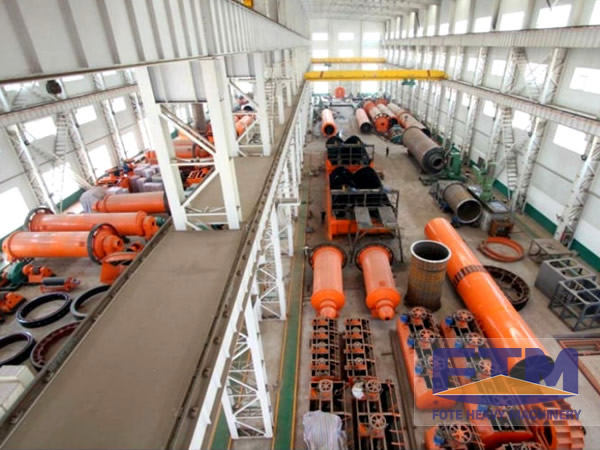NEWS
Tungsten Ore Rod Mill
By: Fote MachineryJanuary 20th,2022
The grinding medium of rod mill is steel rod. Unlike ball mill, rod mill belongs to line contact grinding. For some minerals with low hardness and strong brittleness, and materials with attachments on the surface of ore, rod mill is more suitable for use. For example, when grinding tungsten ore, the use of tungsten ore rod mill can avoid the occurrence of overgrinding. Here is an introduction to the working principle, advantages and application conditions of the tungsten rod mill.

1. Working principle of tungsten ore rod mill
When the cylinder of the tungsten ore rod mill is driven by the motor and the transmission device, the cylinder rotates around the horizontal axis, and the steel rod in the cylinder is about 35~40% of the cylinder volume. The inner wall is driven and lifted to a certain height, under the combined action of centrifugal force and gravity, the steel rod falls or rolls down along the cylinder wall or other steel rod surfaces.
Grinding raw materials are continuously fed from the feeding end of the rod mill, and these materials enter the barrel of the tungsten rod mill, and are crushed after being continuously crushed, ground and crushed by the steel rod. The hollow shaft neck at the discharge end is equipped with a spiral blade opposite to the direction of rotation of the mill. The finely ground particles are suspended in the pulp and overflow from the spiral blade, while the ore particles that have not completed the grinding particle size requirements will sink between the screw blades and be sent back to the rod mill by the counter-rotating screw blades to continue grinding.

2. Advantages of tungsten rod mill
1. Energy saving. The structure of the tungsten ore rod mill is reasonable, which can effectively improve the grinding efficiency. Compared with the traditional rod mill, it can save energy by more than 20%;
2. Exquisite selection of materials. The tungsten ore rod mill is carefully selected, and the barrel is made of thickened steel plate, which is welded by seamless welding technology to ensure the tightness of the barrel;
3. The curvature of the conical end cover of the rod mill is small, so that the steel rod can move regularly in the mill;
4. The diameter of the ore discharge hollow shaft is larger, which is convenient for maintenance, and at the same time, it can reduce the ore slurry level and quickly discharge the ore;
5. Under normal circumstances, the feeding particle size range of the rod mill is 20~30mm, and the product particle size can generally reach 0~3mm;
6. The rod mill grinds the material with the full length of the steel rod, with uniform force, uniform product particle size, and less over-grinding.

3. Application conditions of tungsten ore rod mill
3.1. Before the beneficiation of tungsten ore, in order to ensure that the mineral does not appear excessively crushed, the rod mill is generally used to grind the ore, mainly because the tungsten ore is brittle and easy to wear, and the ball mill is prone to excessive wear.
3.2. In the second-stage grinding operation, if the grinding particle size of the first-stage grinding operation is from 20-6mm to 3-1mm, the first-stage grinding operation can choose a rod mill, which has large production capacity and high efficiency, because a certain weight the surface area of the rod load is much smaller than that of the ball load of the same weight, so the productivity and efficiency of the rod mill are lower than that of the beneficiation ball mill in the second stage of fine grinding.
3.3. If there are relatively soft or not too hard impurity ore in the tungsten ore, a tungsten ore rod mill can be used to grind the ore particles of 19-25mm to 6-10 mesh. In this case, the rod mill is used instead of the cone crusher, which reduces the cost of beneficiation and reduces the dust pollution in the crushing workshop under the premise of ensuring the grinding conditions.


